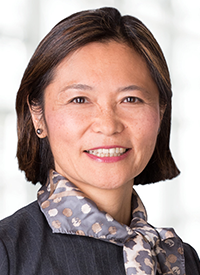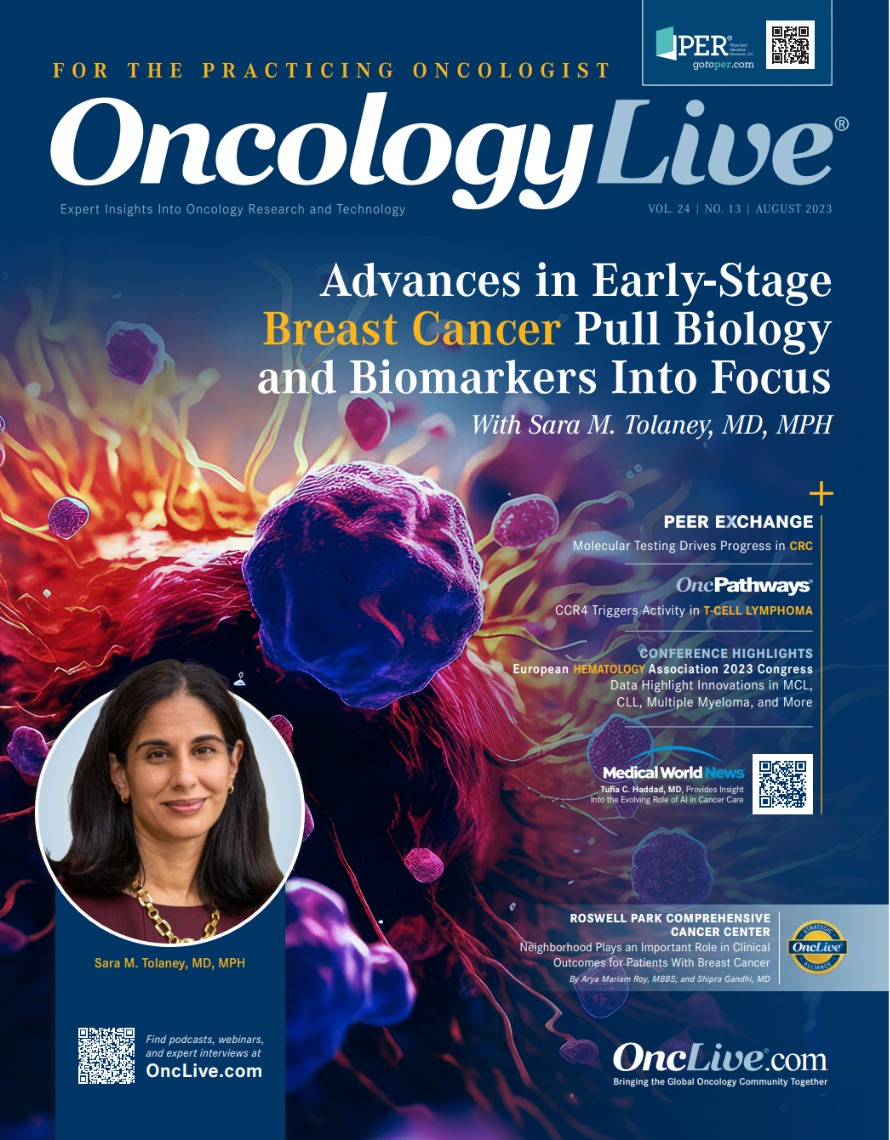News
Article
Novel Program Provides Avenue for Increased Biosimilar Uptake, Reduced Cost
Author(s):
The implementation of a pharmacist-driven biosimilar substitution program across American Oncology Network institutions resulted in increased uptake of biosimilar agents as well as financial savings for payers, patients, and providers.
Melody Chang, RPh, MBA, BCOP

The implementation of a pharmacist-driven biosimilar substitution program across American Oncology Network institutions resulted in increased uptake of biosimilar agents as well as financial savings for payers, patients, and providers. Findings from a 1-year follow-up analysis were presented during the 2023 American Society of Clinical Oncology (ASCO) Annual Meeting.1
Results showed that following the October 2021 initiation of the program, use of the biosimilar forms of bevacizumab (Avastin), trastuzumab (Herceptin), and rituximab (Rituxan) increased from less than 90% of administered doses to over 90% compared with their respective reference products by the December 2022 data cutoff. Uptake of the rituximab biosimilar was the most drastic, increasing from approximately 80% of administered doses at the program’s initiation to approximately 91% at the data cutoff, well above the 67% average for the United States. Trastuzumab uptake increased from approximately 89% at the program’s outset to approximately 92% at data cutoff, with bevacizumab climbing from approximately 90% to 97%; these figures bested both agents’ respective national average usage rates of 80% and 82%, respectively.1
“Drugs for treating cancer account for the largest share of [Medicare] Part B drug spending, accounting for over half of spending in 2021,” Melody Chang, RPh, MBA, BCOP, the vice president of pharmacy operations at American Oncology Network, LLC, said in an interview with OncologyLive®. “It is important for us as community oncology practices to have a strategy for adopting biosimilars so we can stay competitive and be able to deliver [a higher] quality of care. [Additionally], many oncology practices participate in the value-based care or some sort of similar cost-sharing program. [Therefore], they are incentivized to decrease the total cost of care by using products such as biosimilars.”
Moreover, the cost savings attributed to the pharmacist-driven program were significant: From April 2021 to September 2021, payers saved approximately $8.0 million, patients saved approximately $2.0 million, and providers saved approximately $11.3 million, for a total savings of $21.3 million.1 Similarly, from October 2021 to April 2022, payers saved approximately $10.8 million, patients saved approximately $2.7 million, and providers saved approximately $10.6 million, for a total savings of $24.1 million attributable to the program’s implementation. Finally, approximate savings for the respective stakeholders increased significantly from January 2022 to December 2022, with the program in place for approximately a full year, at $26.4 million, $6.6 million, and $23.5 million, for a total savings of $56.5 million.1
Biosimilars are agents based on reference products that have been previously licensed. These agents have no clinically significant differences regarding quality, safety, and efficacy compared with their reference products.2 “Even though biologics have significantly improved treatment outcomes, the trade-off is the high cost of these products,” Chang said. “The cost of biosimilars, however, is much lower, on average approximately 30% to 50% lower than the price of their originator, sometimes even [up to] 80% lower for some products.”
As of June 2023, 22 cancer or cancer-related biosimilar agents have been approved by the FDA, 12 for the treatment of cancer and 10 for use in a supportive care setting. The first biosimilar agent got the go-ahead from the agency in 2015.2
Although biosimilars present a potentially massive opportunity to decrease the cost of care and improve patients’ access to effective treatment options, investigators have noted that to date there have been barriers to uptake and realizing actual cost savings for patients, payers, and providers. Challenges related to the adoption of biosimilars include knowledge gaps among clinicians or patients, relatively sparse data on long-term safety and efficacy, concerns with quality control or product variation, and sales and marketing tactics being applied by nonbiosimilar drug manufacturers to delay biosimilars’ time to market entry and prescription rates.2
“Operational challenges can [also] happen to a manufacturer,” Chang said. “When a manufacturer is trying to scale up, they have to consider their resources. [For example], during COVID-19, we couldn’t [access] some biosimilars because manufacturers had to remove [parts of] the production line to produce products to treat or manage the COVID-19.”
The United States has lagged in biosimilar adoption compared with Europe, with the first biosimilar agent gaining approval in the European Union in 2006 and not until 2016 in the United States. The European Medicines Agency has approved 99 biosimilars overall, compared with 40 approved by the FDA in the United States. Biosimilar use led to an estimated list price savings of $8.5 billion in Europe by 2020 compared with the cost of reference agents.2
The American Oncology Network, which was launched in 2018, is a partnership of over 100 physicians and more than 80 nurse practitioners and physician assistants that included participation from 18 states at the time of the analysis presented at the 2023 ASCO Annual Meeting. The network focuses on community practices providing innovative protocols to ease administration hurdles, enhance facilities, and improve care for patients with cancer. In June 2023, it was announced that Texas would become the American Oncology Network’s 19th state, with the addition of Lone Star Oncology in Georgetown, Texas.3
The pharmacist-driven biosimilar substitution program was implemented in all American Oncology Network member institutions. According to Chang, approximately 33,000 doses of biosimilar agents were administered to 5000 individual patients across the network in a 12-month period during the course of the program. The 1-year analysis focused on the uptake of biosimilar bevacizumab, trastuzumab, rituximab, pegfilgrastim (Neulasta), and filgrastim (Neupogen).1
As part of the program, regional clinical pharmacists acted as liaisons between providers and financial teams to estimate the financial impact of existing drug orders. “[Assessing] the payer coverage and a patient’s financial responsibility were handled by the financial team,” Chang said. “However, the result was processed through a pharmacist [who could] decide [which agent to use]. The provider doesn’t have to do anything; they just authorize the pharmacist to do it on their behalf. Then, we have a report generated so we can identify which patients are using our nonpreferred drugs. After identifying the patient and comparing the cost, a biosimilar switch request is generated. From the request, we automatically switch and the physician [makes an] acknowledgement before they approve the order, just like their normal process,” Chang explained.
Per the parameters of the analysis, payer savings were defined as the difference between the calculated 80% of the Medicare average sales price plus 6% for the given biosimilar vs the reference product. Patient savings were defined as the difference between the calculated 20% of the Medicare average sales price plus 6% coinsurance for the given biosimilar vs the reference agent. Finally, provider savings were determined by finding the difference between the invoiced cost of the biosimilar and the originator.1
Additional findings from the analysis showed that use of biosimilar pegfilgrastim vs its reference agent rose from approximately 40% at the program’s initiation to just under 70% at the data cutoff, nearly double the national average of 37%. Interestingly, the uptake of biosimilar filgrastim rose from approximately 78% in October 2021 to a peak of approximately 92% in April 2022, before falling to approximately 55% at the data cutoff. Comparatively, the national average rate of usage of biosimilar filgrastim is 60%.1
“That’s an interesting finding. We wanted to know why [there was a] reverse back from the biosimilar to the originator,” Chang said. “We looked at the cost of the drug, and [attributed it to] a change in the average sales price. We know the [use] of biosimilars is going to drive the cost down. In general, the average sales price will be more impactful for the cost calculation. It’s interesting, because we see the initial increase [in biosimilar filgrastim uptake] from October 2021 to May 2022, followed by a subsequent decrease from June [2022] to December [2022]. At third quarter of 2022, the biosimilar filgrastim average sales price had dropped [by] 81% from its launch price. During this time, despite the significant decrease in the average sales price of the biosimilar, our acquisition costs remained relatively unchanged. So acquisitions [prices] are not changed, but reimbursement drops. At the same time, the reference product average sales price remained relatively stable, meaning every time you use the biosimilar, your cost is higher than your reimbursement.”
In the future, Chang expects uptake in biosimilar use to steadily increase by way of growing awareness and clinical experience. Additionally, she said policy reform, such as the Inflation Reduction Act, could spark increased biosimilar use. As market competition intensifies, Chang noted that price reductions may anticipate it, leading some manufacturers to reallocate resources or scale back their patient support programs—which could represent a potential drawback.
“Our study demonstrated that a pharmacist-driven biosimilar program increased the adoption [of biosimilars] and the cost savings to all stakeholders,” Chang said. “However, there are still barriers, including the nonmedical switching required by payers because of the payer policy. Moving forward, we will continue this program and expand its coverage, [in order] to have a pharmacist assume the role of working collaboratively with our internal managed care team and the payer team when negotiating a contract or working together with the payers to remove some of the barriers, [such as] prior authorization, and reduce patient cost sharing.”
References
- Chang M, Li J, Peters B, et al. Biosimilar uptake and cost savings analysis before and after implementation of a pharmacist-driven substitution program within a National Community Oncology Network: one-year follow-up. J Clin Oncol. 2023;41(suppl 16):6516. doi:10.1200/JCO.2023.41.16_suppl.6516
- Rodriguez G, Mancuso J, Lyman GH, et al. ASCO policy statement on biosimilar and interchangeable products in oncology. JCO Oncology Practice. Published online April 7, 2023. doi:10.1200/OP.22.00783
- American Oncology Networkannounces Texas as new operating state with launch of community-based oncology clinic. News release. American Oncology Network. June 12, 2023. Accessed June 23, 2023. bit.ly/3JLpBt4









